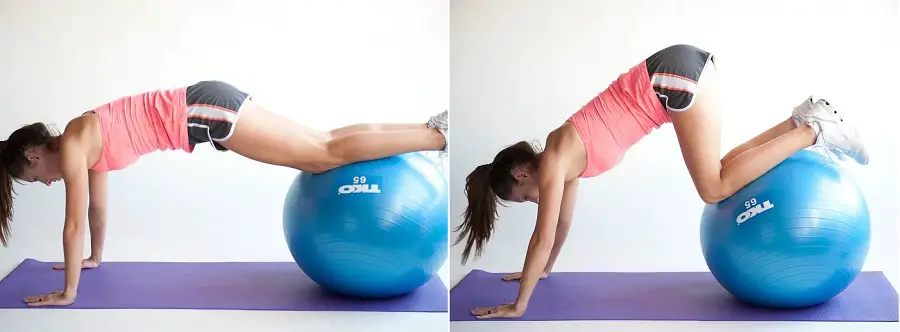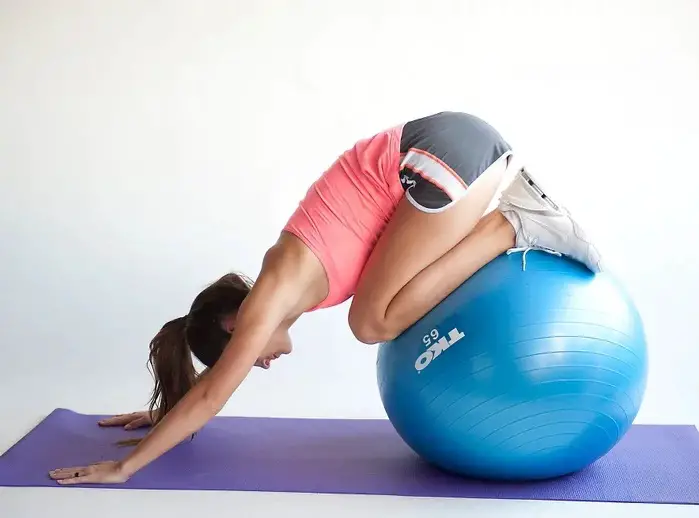If you are looking to strengthen your core and burn some calories at the same time, try out the Stability Ball Knee Tucks exercise today.
This article will cover everything you need to know to add and correctly execute Stability Ball Knee Tucks into your training routine.
Stability Ball Knee Tucks How to Guide
Image Example

Step by Step Description
Step 1: Lie face down on your stomach on top of a stability ball. Place your hands on the floor shoulder width apart, and your feet on the floor pressed together side by side.
Step 2: Stiffen your torso by contracting your abdominal/core. Use your hands to slowly walk your body forward lifting your legs off the floor. Keep moving forward until your thighs or knees are resting on the top of the stability ball. Pull your shoulders back and down. The palms of your hands should be directly under the shoulders. Focus on keeping your legs straight and pressed together.
You are now in the starting position.
Step 3: Exhale and slowly pull your knees in towards your chest while rolling the ball forwards. Tuck your knees under the torso and move your hips upward. Keeping moving in until your knees are under your hips, and your shinbone is over the top of the ball. Pause in this position for a second.
Step 4: Now Inhale and push your knees back away from your torso. Keep pushing back until you return to the starting position.
Difficulty Level
Stability Ball Knee Tucks are an Intermediate level core exercise.
You need to be able to perform the traditional plank, and the Elevated-Feet Plank for at least 20 seconds before including this exercise into your routine.
Equipment Required
To perform this lift, you will need access to a stability ball.
Muscles Worked
The Primary muscles worked by this exercise are your Lower Abdominals, Upper abdominals, and the Shoulders.
Your Obliques, Triceps, Lats(back) and Quadriceps get recruited to a lesser extent.
Benefits of the Stability Ball Knee Tuck
When included in your regular fitness routine this exercise is shown to increase your overall strength while improving balance and stability.
Having a strong core is shown to reduce your chances of receiving a back injury.
Other compound lifts like the Deadlift and Squat use a substantial amount of core strength when they are getting executed. Some lifters even find that they can move more weight on some compound lifts after they have strengthened their core.
Training Tips
To make the exercise even more difficult, you can move the chest down towards your knees as you tuck them in. This method will also require you to stretch your arms further out.

Two common mistakes in the starting position are sagging at the lower back and hiking the hips upwards.
Exhale when you are pulling your knees towards your arms and exhale when they are moving away.
Make sure to keep your hands directly under the shoulders to provide maximal shoulder stability and reduce your chance of injury.
You may Also Like
Swiss Ball Plank
Weighted Knee Raise
Plank Jump Ins
Reference
Looking to gain more strength or lose some weight? We offer free fitness tools to help you reach your fitness goals. Register for free while we are in beta and get free lifetime access to our fitness tools that include an easy to use Calorie Counter, High-Intensity Interval Timer, Multiple Fitness Calculators and our Exercise Logger.